Precursor to the Mỹ Lai Massacre: 1968 Phong Nhị, Phong Nhất_10(1)
Chapter 10: War Casualties from the villages
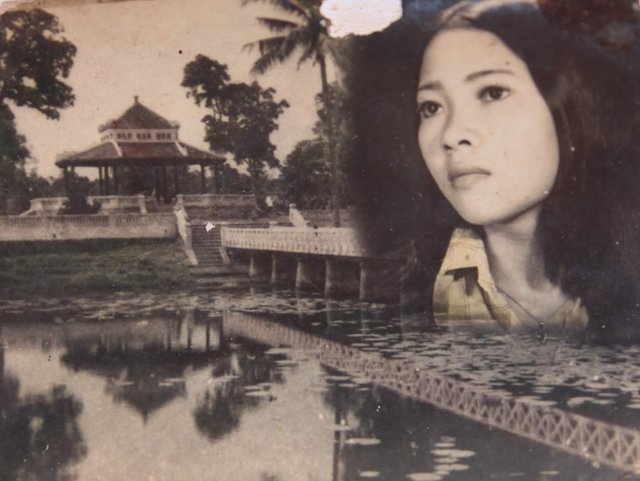
Nguyen Thị Thanh in her youth. She miraculously survived through the massacre inflicted by the Korean troops on February 12, 1968.
“Mama!”
The young girl ran. She ran without purpose or destination. All she could think of was the face of her mother. I need to find her. Mama, mama, mama… She darted across the open field, holding down the acute pain she felt on her side with her hand, which was now drenched in blood. She kept falling as she ran, eventually resorting to crawling as she couldn’t get back up anymore. Her insides spilled out through her side. Preserving what part of herself she can, she continued to crawl. The sky above her began spinning when somebody grabbed her hand.
It was in the afternoon of February 12, 1968. Hell had consumed the villages of Phong Nhị and Phong Nhất. It was after sounds of gunshot and explosion swept the area. One could make out the faint groaning of those who were fortunate enough to make it alive through the torment. The U.S. and South Vietnamese militia who arrived at the scene began their relief work. Every vacant lot and trail was filled with corpses. 8-year-old Nguyen Thị Thanh had no idea how she would locate her mother, Phan Thị Trí(34). She collapsed in the field after listlessly looking from side to side. Her mother was nowhere to be found. Perhaps she was among the bloody corpses, but she was far too exhausted to check. Her innards kept spilling out. Just when she thought this would be her last few moments, somebody grabbed her hand and lifted up her small body. It was a South Vietnamese militiaman. He carried her into a helicopter nearby. The sound of the propeller drowned out the screaming and shouting of the villagers. The helicopter soon ascended away from the villages.
That morning, in Nguyen Thị Thanh’s home, located near the cây da dù in Phong Nhị, were her older brother, Nguyễn Đức Sang(15), older sister, Nguyễn Thị Trọng(11), younger brother, Nguyễn Đức Trường(6), maternal aunt, Phan Thị Ngư(32) and her 8 month-old son, Đoàn Thế Minh. Their neighbor and friend, Trịnh Chờ(12), was also present. Their father, Nguyễn Đức Phường (39, if he were still alive), however, was not with them, as he had gone missing a year ago.
Their mother relentlessly earned money running a shop in the nearby city of Da Nang. She left home at the break of dawn and didn’t return until 9:00pm. Their aunt took care of them in lieu of their mother, but that day, their mother was scheduled to come home earlier, as it was the night before the first full moon of the lunar new year. Her mother had gone grocery shopping. The children, being of mix of both relatives and friends, ages ranging from 0-15, always created a commotion when they were out to play, pretending to plant vegetables or collecting empty bottles. They laughed and chattered boisterously. That is, until a foreign Korean soldier invaded their home.
When they began hearing sounds of gunshot, Nguyen Thị Thanh, along with her aunt and seven other children, hid herself in the bomb shelter. It was a small area, about 1 meter deep and 4 meters wide, that they had dug out in advance to prepare for U.S. bombings. The Korean soldier who broke into their home found the shelter and motioned for them to come out. Their aunt advised them not to go out, however. The soldier made a gesture as if he were about to throw a hand grenade, terrifying the children to no extent. Nguyễn Thị Trọng was the first to make her way up, triggering a chain of events that they would forever look back in regret. Nguyen Thị Thanh, even after being shot in the stomach, somehow managed to escape to the home of their neighbor, Trần Thị Được(41).
Thị Thanh only found out later that the Korean soldier had shot her 6 year-old brother, Đức Trường, directly in the mouth. Her brother died with his face mutilated. Her older sister, Thị Trọng and their friend, Chờ, died immediately after being shot in front of the bomb shelter. Their aunt, Thị Ngư, was stabbed by the soldiers while trying to stop them from burning the house. Her son was found as a corpse next to his mother. Thị Thanh was transported along with her older brother, Đức Sang, in the helicopter. Five out of the seven who were at their home that day were killed, with still no news of where their mother had gone.
Thị Thanh opened her eyes to find herself at a hospital in Da Nang. When she regained consciousness, the only person by her side was her grandmother, Nguyễn Thị Sọạn (67). “Where’s mama?” “Nevermind your mother. She has a lot of chores to take care of at home.” Thị Thanh continued to ask about the rest of her siblings, but her grandmother could not bring herself to answer properly. Instead, she kept reassuring her saying, “Mama will be here very soon.” Thị Thanh wholeheartedly believed in her grandmother’s soothing words, but her mother was not alright. She was in fact one of the many corpses lying helplessly in the hole dug out in the village. If it weren’t for the first full moon celebration, she would have returned home late, as she would have been in Da Nang working until late. She would have then been able to nurse her daughter at the hospital. Thị Thanh had lost her mother, older sister, and younger brother. The only person left in her family was her wounded older brother.
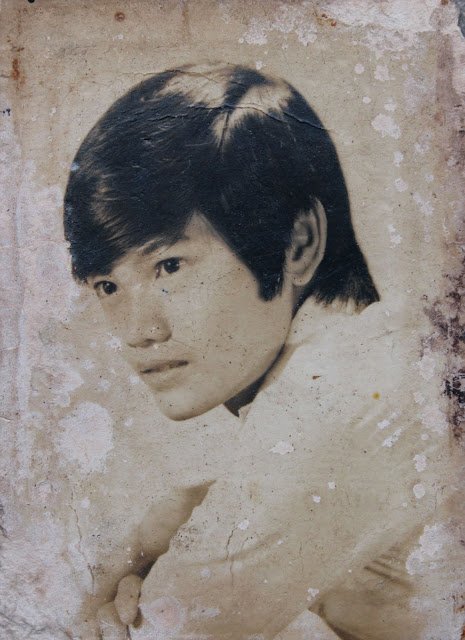
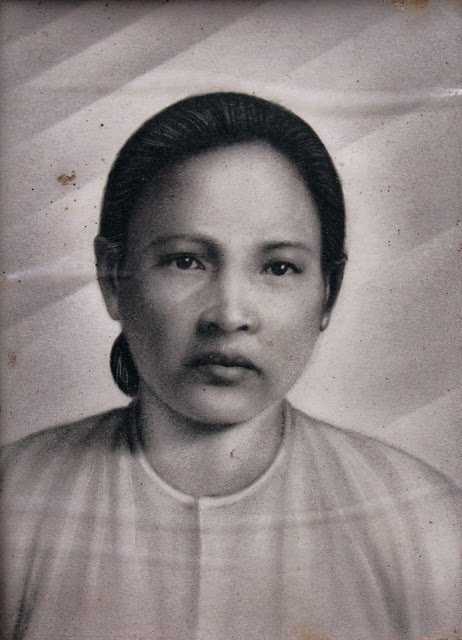
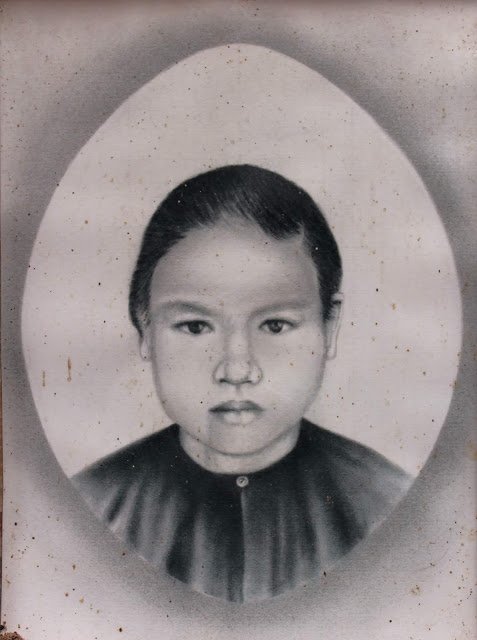
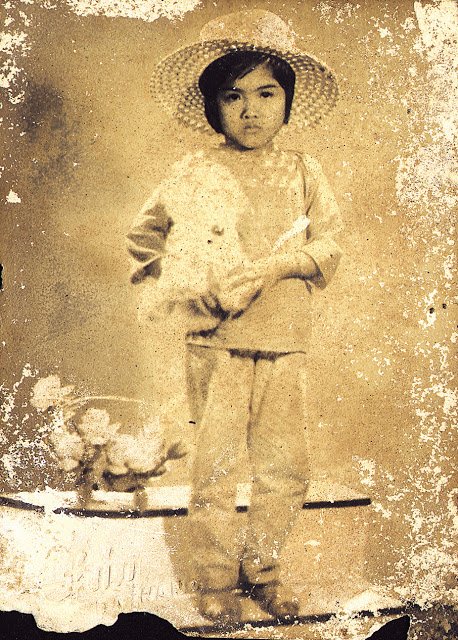
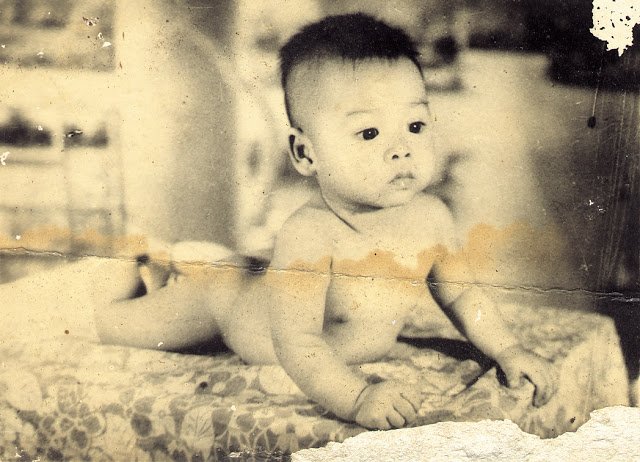
The family of Nguyen Thị Thanh, the tragic victims of February 12, 1968. The eldest brother Nguyễn Đức Sang, who was seriously injured; their mother, Phan Thị Trí, aunt, Phan Thị Ngư, older sister, Nguyễn Thị Trọng, and younger brother, Nguyễn Đức Trường, who were all killed in the massacre.
“Mama!”
The boy ran. He ran without purpose or destination. There was no doubt that his mother was not there. She had gone into labor at a hospital in the Điện Bàn District. His father had gone with his mother. The boy slowly wrapped the bloody wound on his right leg, where he had been shot, with a piece of cloth. He continued yelling for his mother, but he knew that finding his younger sister, Trần Thử was the first priority. He ran across the open field.
Trần Diệp(15) had just come out of hiding from a bomb shelter near Phong Nhất. All he could see were the dead bodies in the big hole dug out near the village. He needed to find his sister, but she was nowhere to be found. He ran in the direction of Phong Nhị and Phong Nhất. There were many corpses near the creek as well. They were covered with banana leaves. Diệp lifted the leaves, one by one, checking the faces of the corpses. One, two, three, four, five...and then he finally found his 5 year-old sister, Thử, looking ghastly and helpless. Her face was covered with rice straws and dirt. Her chest and feet appeared shot and stabbed multiple times.
If he hadn’t smelled something burning, Diệp would have not come out of hiding. As soon as he heard the sound of the first gunshot, he hid in the bomb shelter along with his grandfather, Trần Hoành(70) and grandmother, Nguyễn Thị Ưng(77), but the smell of smoke caused him to worry about their water buffalo, which was his parents’ most prized possession. Unlike their home, which was made of bricks, the buffalo’s stable was but a thatched hut. He couldn’t let the water buffalo burn to death. When he had gone out to protect the buffalo was when he was shot in the leg. A group of Korean soldiers ran over to him from about 50 meters away. Even as he was limping in pain, Diệp unleashed the water buffalo. His grandfather who had followed him out was immediately shot in the chest.
Diệp returned back to the bomb shelter and hid there in silence for a while with his younger siblings, Trần Văn Linh(9) and Trần Thị Tảm(3). When he carefully made his way back out, the Korean soldiers were gone, and in their place were U.S. and South Vietnamese militiamen. The sight of their guns made Diệp sick with fear again. He went back into the shelter. A little later, he heard the voices of his father, Trần Thâm(41) and his paternal aunt, Trần Thị Ớt(30). Relieved, Diệp made his way out, only to be asked by his father about Trần Thử. He had no recollection of seeing Trần Thử from a few hours ago. He suddenly recalled his mother’s expression when she would reprimand him. He went out hurriedly in search of his brother, who he had found at last near the creek with a banana leaf covering his face.
Their father had heard about the fire in the village from the hospital in Điện Bàn District, and had rushed back home with their aunt. Their mother, Nguyễn Thị Xuyên(39) who was under postnatal care, had urged her husband to hurry home and check on the family. U.S. soldiers had barricaded the number one national highway that led to the village and wouldn’t let them pass. From afar they could see red flames consuming Phong Nhị and Phong Nhất.
A tussle would break out between U.S. soldiers and the South Vietnamese militia. Many of the militiamen had family members living in the villages. They insisted that they need to hurry up and stop the mass murder of innocent civilians, but the U.S. soldiers would shake their heads, as it was very likely that they could get attacked by the Korean troops as well.
Diệp’s father and aunt eventually witnessed his finding of his sister’s corpse. His aunt lifted Trần Thử up. Trần Thử’s body was limp, having been shot multiple times. There were corpses of children everywhere, even those of babies who weren’t even a year old. For the first time in their lives, they beheld human bones and innards. They had never before seen so many corpses. Diệp’s aunt threw up everything in her stomach from that morning. She couldn’t eat for an entire week after that.
His mother asked his father reluctantly when he returned to the hospital, “Have all of our family members passed away?” His father responded, “Only one person did.” His mother replied that they were rather “fortunate.” When his father told her to rest assured, she shot back saying, “Who are you kidding? I know you’re lying to me. If they’re alive, bring them before my very own eyes!” Diệp and his grandfather were being treated at the same hospital in Điện Bàn District. The other siblings who had escaped the violence arrived at the hospital as well. It was only after seeing them that his mother finally cried tears of relief.
Ironic it was that she should deem themselves fortunate for having lost only one person.
The two mothers eventually passed away. It wasn’t just Thị Thanh’s mother. Diệp’s mother, who had given birth that day and gone into postnatal care, died two months later after stepping on a landmine. The boy and girl survived. Diệp, who had been shot in the leg, was hospitalized and treated for a week. Thị Thanh, who had been shot in the stomach, was hospitalized at the Da Nang hospital for an entire year. Her older brother, Đức Sang, whose wound was more severe, was transported onto a German hospital ship and thereafter operated on at a big hospital in Ho Chi Minh before returning in April on 1975. Even with their mothers no longer present, they endured through their respective wounds and went on living life.
"A security guard team comprised of five US Marines, 26 (South Vietnam) militia members and Warrant Officer Duong, entered the village and requested for a transport helicopter for the injured. Two females and one male were the only survivors. They were transported by helicopter. The guards found two elderly people buried under the rubble of a burning house along with many corpses near the ditch covered with grass. Some corpses were pulled out of the wreckage. They were burned beyond identification. Even their gender could not be discerned. Following up the trail they found two more injured women and many other dead bodies. They were afraid that we would kill them and took out their ID cards. A member of the guard team took a picture. "
That day Lieutenant Sylvia of the U.S. Marine Corps, who was executing rescue operations at the scene, testified to senior units four days after the incident on February 16. One of the two females who were taken to the helicopter was Nguyen Thị Thanh. The one male was her brother, Nguyễn Đức Sang. At the end of the affidavit, there is information on the US soldier who took pictures at the scene. He supposedly took photographs from every angle, all to which we have no access.
**The South Vietnamese Militia
The militia, along with the local army, supplemented the regular army in defending each province in South Vietnam. The number of provincial and militia troops exceeded that of the regular army. The U.S. Army referred to the local army as RF, and the militia as PF. Meanwhile, the South Vietnamese Army was called ARVN and the Air Force was called VNAF. The people of Phong Nhị and Phong Nhất called the South Vietnamese army the Ngụy Quyền (puppet government), whether it be the regular army or the militia.
- Written by humank (Journalist; Seoul, Korea)
- Translated and revised as necessary by April Kim (Tokyo, Japan)
The numbers in parentheses indicate the respective ages of the people at the time in 1968. This series will be uploaded on Steemit biweekly on Monday.